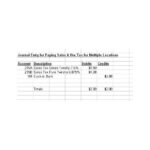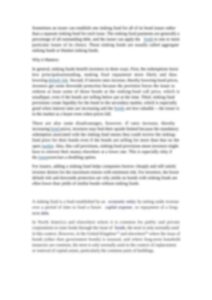
These may be the result of billing mistakes related to loans, deposits, and payment processing activities. Now cloud accounting software has made the whole process more efficient. It provides an opportunity to record their cash position and forecast their cash flow with a higher degree of accuracy. Lastly, in the United States, account reconciliation is crucial to help companies comply with federal regulations applied by the Securities and Exchange Commission (SEC) under the Sarbanes-Oxley Act. Businesses worldwide must also comply with all local laws and regulations. In both cases where mistakes are contribution to sales ratio management online identified as a result of the reconciliation, adjustments should be undertaken in order for the account balance to match the supporting information.
- Account reconciliation should be prepared and carried out by qualified accounting personnel, typically within the finance department.
- Smaller businesses may use a simpler account conversion method instead.
- Did you know there’s more than one way to reconcile your accounting records?
- Ready to learn how easy it is to conduct trust reconciliation with Clio?
- Perhaps the Excel spreadsheet you used to calculate the journal entry has a formula error.
- Bank reconciliations involve comparing the business’s financial statements with the statements it receives from the bank.
Reconciliation is used by accountants to explain the difference between two the complete guide to filing and paying small business taxes financial records, such as the bank statement and cash book. Any unexplained differences between the two records may be signs of financial misappropriation or theft. This reconciliation guarantees that your accounting records maintain an accurate account of the amounts customers owe your business. It’s a critical tool for maintaining a healthy cash flow and preventing any missed payments from going unnoticed. All trust transactions in the internal ledger should be accurately recorded and should align with transactions in the individual client ledgers.
Common Challenges in Account Reconciliations and How to Solve Them

Perhaps the Excel spreadsheet you used to calculate the journal entry has a formula error. Some or all of these will happen at some point in the life of every business. But if you don’t reconcile your accounts regularly, you might not catch mistakes as they arise. It also helps to flag any discrepancies, mistakes, or fraud in the company’s books. Any of these could have a serious detrimental impact on the financial health of a company. So, businesses should perform regular check-ups because these can contribute to their success.
Business reconciliation
This works by comparing 2 sets of records and is a way of making sure all the figures are correct and match up. Reconciliation has become a byword for consistency, accuracy, and thoroughness. Balancing financial records is a fundamental principle in any company or business. With real-time reconciliation capabilities, HighRadius ensures that your financial records are updated daily. This is particularly helpful to organizations where a large number of transactions take place every day.
What are the two basic methods of account reconciliation?
But for all methods, if you’re not using reconciliation software, the first step will likely be importing account transactions from your ERP or accounting software into an Excel spreadsheet. It then makes sure that the purchase got logged correctly on both the balance sheet and income statement. So, the business records the purchase as a credit in the cash account and a debit to the asset account for reconciliation.
Its powerful matching algorithms quickly identify and resolve variances, increasing speed and accuracy. For example, a company maintains a record of all the receipts for purchases made to make sure that the reciprocal in math definition rules examples facts faqs money incurred is going to the right avenues. When conducting a reconciliation at the end of the month, the accountant noticed that the company was charged ten times for a transaction that was not in the cash book. The accountant contacted the bank to get information on the mysterious transaction.
Controllers can mitigate this issue by mandating that only accounts with large ending balances be reconciled at the end of each month, thereby reducing the workload while still spotting most account errors. A reconciliation can uncover bookkeeping errors and possibly fraudulent transactions. An outcome of this examination is that adjusting entries are made to the accounting records, to bring them into line with the supporting evidence. This tends to result in fewer audit adjustments at the end of the year, since most issues have already been found and corrected by the accounting staff. Account reconciliation is a vital process that helps businesses maintain their financial health by identifying errors, preventing fraud, and ensuring the validity and accuracy of all financial statements. Most account reconciliations are performed against the general ledger, considered the master source of financial records for businesses.
However, generally accepted accounting principles (GAAP) require double-entry bookkeeping—where a transaction is entered into the general ledger in two places. When a business makes a sale, it debits either cash or accounts receivable on the balance sheet and credits sales revenue on the income statement. Account reconciliation is necessary for asset, liability, and equity accounts since their balances are carried forward every year. During reconciliation, you should compare the transactions recorded in an internal record-keeping account against an external monthly statement from sources such as banks and credit card companies.
Bank errors are infrequent, but the company should contact the bank immediately to report the errors. The correction will appear in the future bank statement, but an adjustment is required in the current period’s bank reconciliation to reconcile the discrepancy. For example, while performing an account reconciliation for a cash account, it may be noted that the general ledger balance is $249,000. Still, the supporting documentation (i.e., a bank statement) says the bank account has a balance of $249,900. For example, while performing an account reconciliation for a cash account, it may be noted that the general ledger balance is $500,000.

